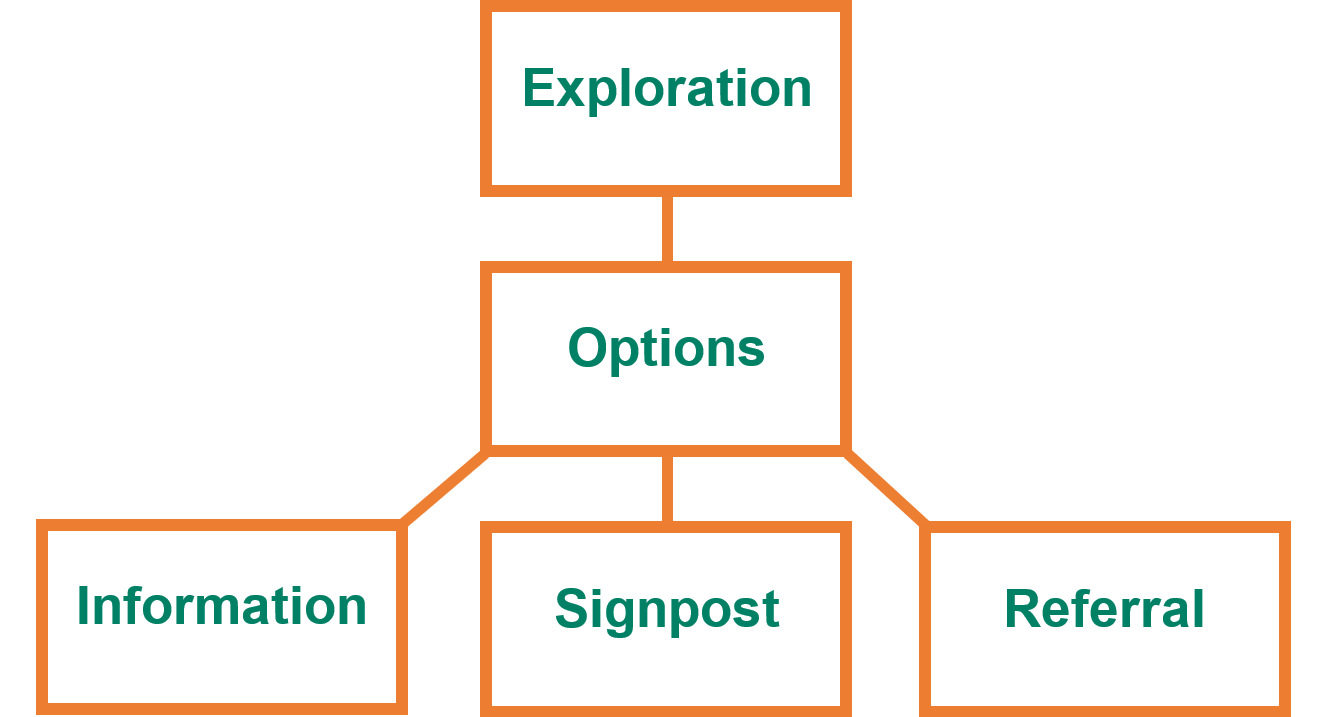In this section we will be looking at the next steps available to you and the young person.
Once you've fully explored the young persons situation, based on all the information they have given you, you will need to identify the appropriate next steps.

Effective signposting and referral ensures that young people get the right information. Nobody is an expert in everything and getting young people the help of another service through signposting or referral ensures that support services work within their knowledge and get young people all the support they need.
It’s important to remember that there are differences between information, signposting and referrals.
Information
Summary: Self-help from recognised websites and other in house materials.
Pros: Accessible whenever; via the internet or printed materials. It’s quick- you don’t have to queue, work around drop-ins, book an appointment or wait for a referral. It can give young people a sense of empowerment and ownership over the process.
Cons: General information. Can not provide advice. No one to talk through options with.
Signposting
Summary: Pointing young people to the most relevant organisation, service or giving a recommendation on what to do next.
Pros: Young people can speak to someone about their issue(s). Young people can access this when it’s convenient to them (service open times dependant).
Cons: Young people may not follow up on it.
Referral
Summary: A referral is more involved than signposting. In a referral, a professional or sometimes the young people themselves makes a request for specialist services. You may need to work with this service to help young people get a referral.
Pros: Tailored information, advice or support for the individual with a professional specialist. The young person gets specialist support for their issue.
Cons: There could be a wait for services.